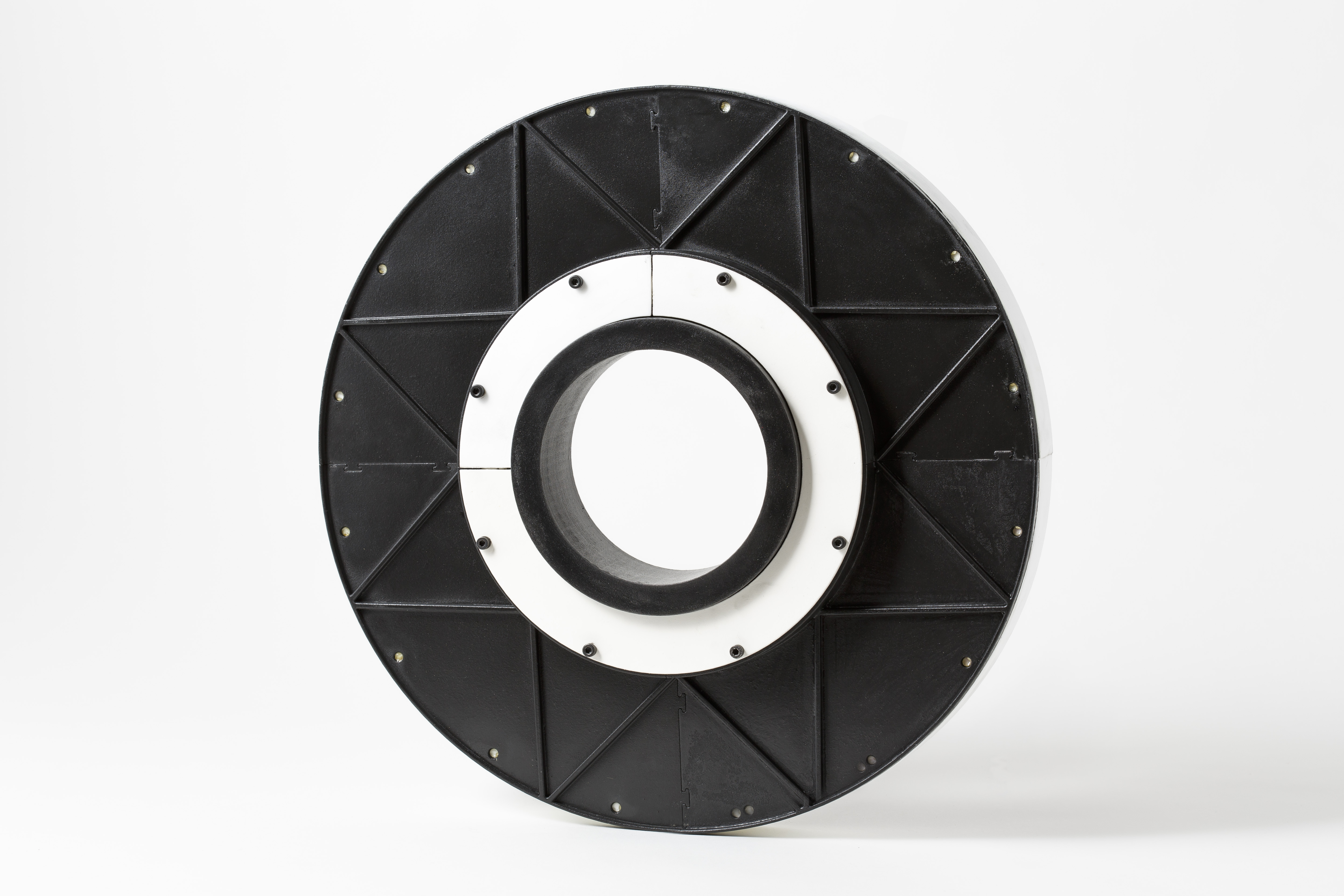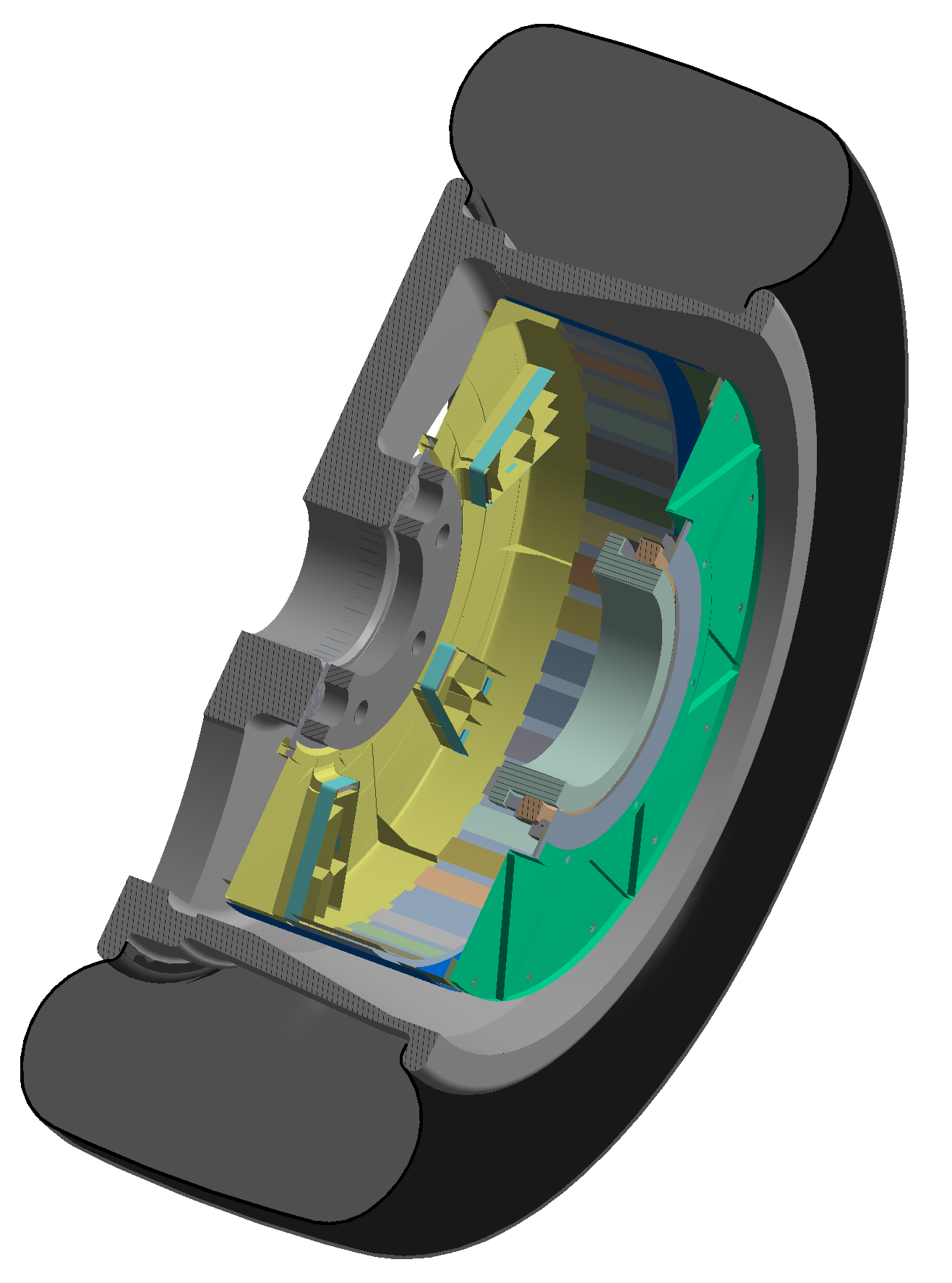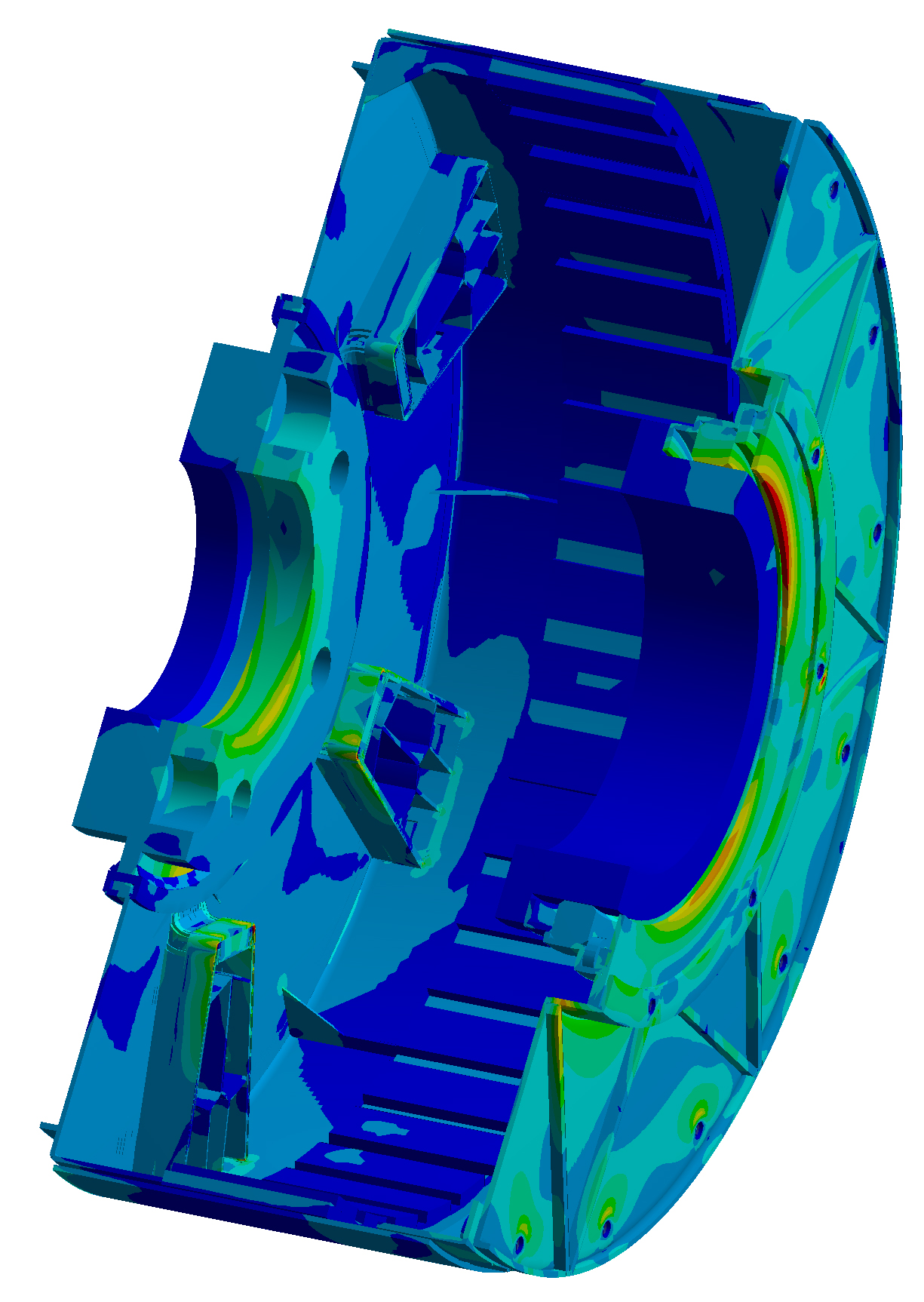Lightweight design, Digital Twin, FE-Analysis




Most of the electric wheel hub motors on the market are mainly made of metallic materials. The downside of this is that the high unsprung mass of the electric motor has a negative influence on driving dynamics and ride comfort. This, along with other material-specific disadvantages specific to the material, such as susceptibility to corrosion and high levels of thermal expansion, which affect the air gap and thus the efficiency of the motor, are to be minimized or improved as part of the "fabulous" project. Here, thermoplastics with continuous and short-fiber reinforcement will be relied upon, in combination with conventional materials. This is due to the fact that some fiber-reinforced engineering thermoplastics have a high degree of lightweight potential, are corrosion-resistant and less sensitive to media influences than metals. The required temperature range of -40 °C to 120°C represents a challenge to the use of thermoplastics in a wheel hub motor, given that the motor or motor components must be sufficiently rigid and structurally durable.
The design of the wheel motor is very complex due to the fact that many issues have to be taken into account. On the one hand, the new motor must be structurally durable, lightweight and thermally stable at given operating loads. On the other hand, the motor must be electrically efficient and rigid. Due to the complexity and the interactions between the mechanical or geometrical and electromechanical target variables, a digital twin is being built as part of the project. To describe the interaction of the various effects, automated algorithms are used to formulate the response parameters of the system as a mathematical function of the input parameters. This requires extensive variant calculations for sensitivity analysis as well as for quantifying the effects and interactions of the design parameters. For this purpose, parameterized calculation models are created that can be used in the automated process. As a metamodel, the generated digital twin of the demonstrator component then allows, e.g., for the rapid variation, evaluation and optimization of construction parameters.
Fraunhofer LBF performs the mechanical calculations for the engine in the digital twin. The mechanical calculation for the motor is fully automatic and runs as described below:
With each iteration cycle, the optimization algorithm learns about the effects and interactions of the optimization parameters, improving the design of the engine. Once the optimization is complete, a design with the best characteristics is selected, detailed, manufactured and tested.
In addition to the mechanical calculations within the framework of the digital twin, Fraunhofer LBF is carrying out the experimental characterization of the new materials developed by its project partners and the applied hybrid material combinations.
Furthermore, a component for protecting the internal components of the wheel hub motor was developed by Fraunhofer LBF as part of the project. The so-called “lid” has to fulfill several functions. The main function of the “lid” is to reduce the noise emissions of the wheel hub motor, due to the fact that in electric motors, unlike internal combustion engines, structure-borne noise caused by vibrations is not drowned out by the engine noise. The lid supports the rotor, meaning that the “lid” performs a mechanical task. At the same time, the “lid” protects the wheel hub motor from contamination. The “lid” is integrated in the digital twin because it fulfills a mechanical function, but does not contain any optimization parameters that are taken into account in the optimization algorithm.